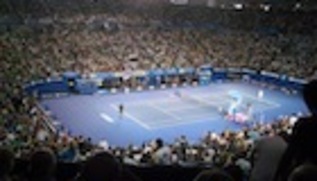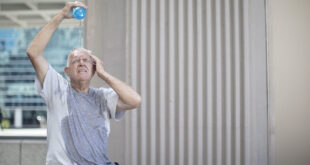It’s summer, the rackets are singing, the ASB and Heineken tournaments and the Aussie Open has been and gone . So what a better topic to write about than that annoying old injury known as tennis elbow.
The funny thing is, many people that suffer from this condition don’t even play a racquet sport. In fact, some estimates say that only about 40% of people that have the condition do play tennis and its related sports. What is common among sufferers, however, is some kind of activity involving gripping. For some people this is sports-related, others work related, and for some it can even be from recreational or a one-off burst of activity.
The pathology behind tennis elbow isn’t fully understood, but is related to a number of changes that occur at the tendon on the outer elbow. This is the region where the muscles that cause the wrist and fingers to extend come from (an essential part of the gripping movement). Initially there is likely to be inflammation of the tendon and sometimes even a small tear in the tendon. As the condition progresses, a myriad of changes in the tendon and surrounding tissues occur that relate to a chronic and complex pain condition.
Interestingly, a large percentage of people with tennis elbow also report symptoms in the cervical or thoracic areas of the spine, which indicates multi-factorial pathology. The diagnosis is relatively easy to make, and further investigations are not usually required.
Tennis elbow is most common in people between 35 to 60, with the peak being around 45 years of age. There is no major difference in gender. The duration of time of symptoms can be varied, anywhere from a number of weeks right up to a few years.
So what it is the best treatment for this condition? Unfortunately a definitive answer to this question isn’t easy to give, as there are numerous treatments out there, and most studies investigating treatments are of poor quality. In terms of physiotherapy treatment, it appears a mixture of treatments probably gives the best result. This may include stretching, strengthening, joint mobilization, bracing, acupuncture and massage. If cervical or thoracic spine symptoms are also present, then treatment to the spine would also be indicated. In the long term, to prevent recurrence identifying causative factors and biomechanics analysis is vital.
Outside physiotherapy, cortisone injections have long been a popular treatment. One well regarded study has shown that in the short term cortisone injections give better results than physiotherapy or no treatment. However, this same study also showed that in the long term (over 1 year), there was a very high rate of recurrence of symptoms, and the cortisone patients were worse off than the physiotherapy and no treatment people in the long term.
It may be that because cortisone injections often give good symptomatic relief, patients continue with the same aggravating activities, and hence worsen things again. It may be that for some people a cortisone injection followed by physiotherapy may be an effective treatment, and studies are currently being undertaken to look at this.
Other treatments sometimes used include extra-corporeal shockwave therapy, autologous blood injections and nitric oxide patches. The jury is still out on the latter two with some early promising results. Shockwave therapy does not appear to have good results in the current studies. Anti-inflammatory drugs and pain relief may be of some benefit in the short term.
Overall, the condition is generally described as self-limiting, which means for a a large number of people the symptoms will ease with time. However for those that require normal function of the elbow, time is often not a luxury that they have, and this is when treatment is likely to be helpful, to enable quicker return to function. Physiotherapy will be a mainstay of this treatment.
Andy Schmidt









Join the Discussion
Type out your comment here:
You must be logged in to post a comment.